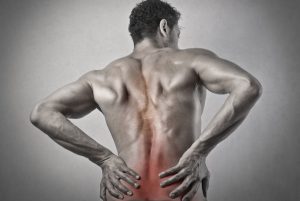Spondylosis & Spondylolisthesis
 Spondylolysis is a disruption in a part of the vertebrae known as the pars, usually involving the fourth or the fifth lumbar vertebra in the lower back. In young people, spondylolysis may be a result of a stress fracture most commonly seen in active athletes, such as gymnasts, weightlifters, football players and dancers. It may also be caused by trauma or may be congenital.
Spondylolysis is a disruption in a part of the vertebrae known as the pars, usually involving the fourth or the fifth lumbar vertebra in the lower back. In young people, spondylolysis may be a result of a stress fracture most commonly seen in active athletes, such as gymnasts, weightlifters, football players and dancers. It may also be caused by trauma or may be congenital.
In older patients, it is caused by degeneration of the joints and discs. Sometimes, spondylolysis may allow the vertebral bones to slip, throwing the spine out of alignment. In extreme cases, this may lead to spondylolisthesis, which may result in severe localized pain in the back as well as pain in the legs. This is slippage of one vertebra relative to another.
Signs and symptoms:
- Slight to severe back pain
- Pain across the lower back
- Muscle spasms
- Tightening of the hamstrings
- Back stiffness
- Difficulty walking
- Nerve compression
- Changes in posture
Why it hurts:
- With a large slippage, the bones may start to press on nerve roots or the spinal canal and be another cause of narrowing or stenosis.
Non-surgical treatment options

- Rest from activity until symptoms resolve
- Use of a back brace
- Strengthening of the back and abdominal muscles or core muscles
- Physical therapy
- Pain medications
- Monitoring of slippage by X-ray for continued compression
- Spinal injections for pain and inflammation
